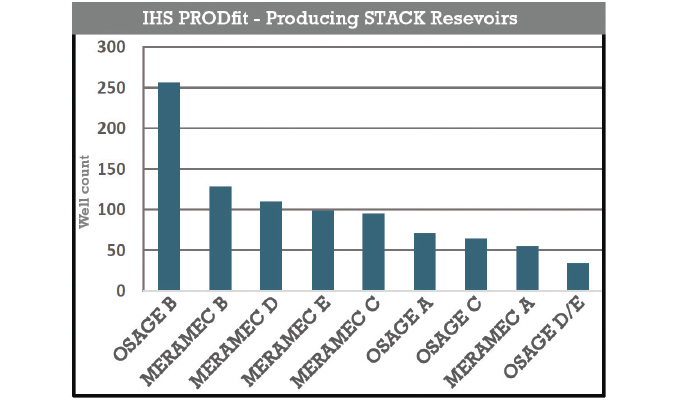The Greater Anadarko Basin in the American West has been a prolific source of conventional U.S. oil and gas production since the 1950s. However, according to new energy research from IHS Markit, a world leader in critical information, analytics, and solutions, the basin may not yet be as depleted as previously thought. This report projects an estimated sixteen billion barrels of oil and more than 200 trillion cubic feet of gas in un-risked technically recoverable resources in unconventional reservoirs. Below, John Roberts, executive director, global subsurface operations and co-author of the IHS Markit Anadarko Basin research with Prithiraj Chungkham, director of unconventional resources, shares his thoughts on what this means for future development.
MPT: What is the background and context of this latest report?
John Roberts: This report, The IHS Markit Complete Play Analysis of the Greater Anadarko Basin, Texas, Oklahoma and Kansas, USA, is the first phase of a comprehensive, eighteen-month-long project to model and interpret the large basin’s key geologic characteristics, including 3D geologic models of forty-one plays to better estimate its remaining hydrocarbon potential.
MPT: What makes the Anadarko Basin such an appealing subject for a study of this size and duration?
John Roberts: The Anadarko Basin has long been a major contributor to U.S. production, but it is just getting started in terms of delivering on its unconventional production potential. We are now witnessing a new kind of Oklahoma land rush. But unlike what happened in 1889 when lands were opened to settlement, this time the competition is for access to the energy resources that lie below the surface.
MPT: What are some of the new insights you’ve shared in the report?
John Roberts: By getting to a greater level of granularity and accuracy regarding producing formations, we change the entire view of the basin. For geologists, it’s like having a more powerful microscope.
MPT: The report posits vast potential of the Simpson shale formation, which you believe could be one of the biggest yet-to-be developed shale plays in the United States.
John Roberts: The Simpson has long been among the largest historical producers of vertical production in the Anadarko Basin. But our new analysis shows that there is also significant Simpson potential as a major driver for horizontal shale production.
MPT: What do you see as the future of the Anadarko Basin?
John Roberts: The IHS Markit analysis includes modeled and interpreted formations and benches in the STACK and SCOOP plays and has delivered them in a workstation-ready 3D format. The significant improvement in assigned formations not only adds detail and accuracy to the interpretive process, but dramatically changes the views of the basin and understanding of where future hydrocarbon potential exists.
As it stands now, only about 20 percent of the Anadarko Basin’s STACK “sweet-spot” locations have been drilled or developed. The play is still in its early stages of unconventional development. We can easily envision an additional 4,000 to 5,000 horizontal wells drilled.
MODERN PUMPING TODAY, May 2019
Did you enjoy this article?
Subscribe to the FREE Digital Edition of Modern Pumping Today Magazine!



